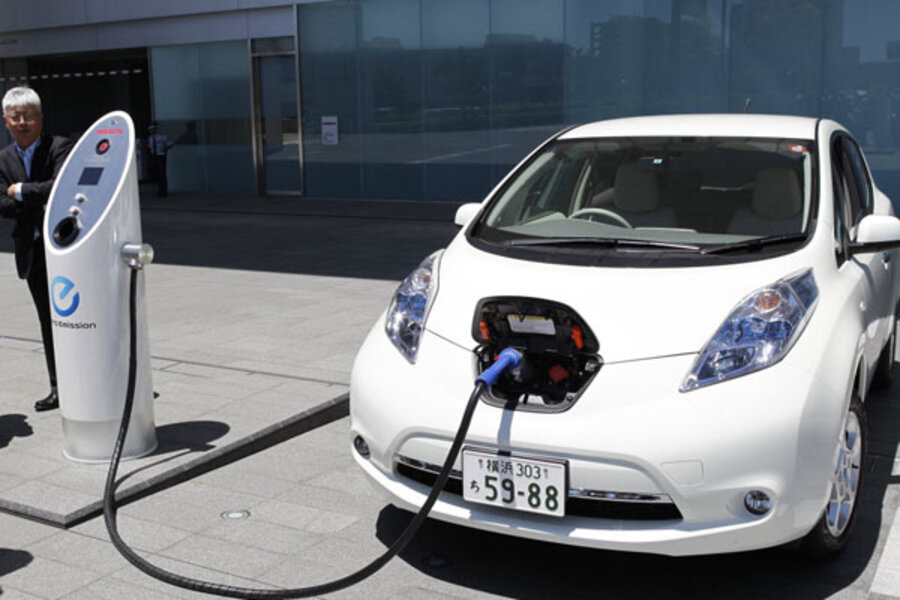
The Prime Minister of Japan, Yoshihide Suga, announced yesterday, 27 from December, a plan to make the country carbon-free by 2050 and alternatively encourage companies in the energy sector to gradually focus on the use of renewable energy and hydrogen. Suga promised to achieve zero net carbon emissions in 30 years. For this, he urged Japanese auto companies, of great penetration across the planet, to “become carbon-free by 2030”. As a consequence, oil-powered vehicles will be eliminated, according to the government, in about fifteen years. In contrast, such an initiative should generate almost US $ 2 trillions in “green” business and investments, as stated.
Suga had already announced this purpose in a political speech in October, shortly after taking office in replacement of former premier Shinzo Abe, In September. Analysts understood that the green economy should be one of the main focuses – otherwise the main – of your administration, contradicting, by the way, those who predicted he would be an Abe factotum, who had served as Cabinet Secretary. One of the biggest challenges of the current "Premier", according to them, will reactivate Japan's economy, what would it mean to break up, somehow, with the "three arrows" policy – aggressive monetary policy, fiscal flexibility and structural reforms – that Abe was unable to achieve in his nine years of government, and focus on another development paradigm, in line with the concerns that the environmental issue raises around the planet. For so much, he will have to convince the powerful “lobbies” and the internal “vested interests”, especially in the automotive sector, to accept this challenge. Yet, it is unclear whether Suga has the political clout to seduce them and drive Japan away, resource-poor, of its dependence on imported oil and gas.
Feasible, or even possible?
The strategy to be followed, according to the authorities, covers several different sectors. according to her, it would be necessary to triple the presence of renewable sources in the country's energy matrix and, at the same time, focus on the complex issue of nuclear energy. In this process, 14 industries, like wind “offshore”, of hydrogen, ammonia fuel, as well as the automobile and rechargeable batteries. For each of them, a specific plan will be outlined. As a result, the government intends to supply through renewable sources of 22% a 24% of the country's electricity needs up to the fiscal year of 2030, Comparing to 17% in the fiscal year of 2018. It should be noted that Japan includes hydropower in the renewable energy category.
Wait-se, Yet, that most of the growth will come from wind and solar energy.. For so much, a larger share of the budget should be allocated to research on advanced battery and wind energy storage technology “offshore”; in the latter case in view of its great potential, Japan being an archipelago. In consequence, the electricity installation goal “offshore” it would be up to 45 gigawatts in 2040. The government should also provide tax incentives and other support to boost investment in green technology., projecting an annual growth of 90 trillions of yen (US$ 870 billion) up until 2030. In addition to this, other incentives will be offered to companies, as a "green background" of 2 trillions of yen (US$ 19 billion), to finance the development of new systems.
With regard to nuclear energy, the Minister of Economy, Hiroshi Kajiyama, recently stated that “would do your best for the next ten years” to restart Japan's nuclear power plants. How do you know, this is a thorny topic, in view of the opposition of a large part of the population, still traumatized by the earthquake that damaged the Fukushima Daiichi nuclear power plant, in 2011 (e, subliminally, by the nuclear holocaust of Hiroshima and Nagasaki, of 1945). Many nuclear plants have been undergoing safety inspections since then. For this reason, Kajiyama was cautious with the idea of building new plants, but said nuclear power “is still needed”.
Would be, at this point, It is convenient to analyze the energy issue in Japan to understand the scale of this challenge.
The country's rapid industrial growth since the end of World War II has doubled energy consumption every five years, from the decade of 1990. During the period of accelerated growth, of 1960-72, this consumption grew twice as fast as the GDP. However, Japan lacks significant domestic fossil fuel reserves, except coal, to sustain such high rates, and need to import substantial amounts of crude oil, natural gas and other energy resources, including uranium for its nuclear power plants.
It is in this scenario that, already in 1976, with just 3% of the world population, the country consumed 6% of the global energy supply. Is on 2010 depended on oil imports to supply about 84% of your energy needs. That same year it was the world's leading importer of coal (near 20% of total imports) and the first of natural gas (12,1% of the world total). Even though Japan depended on nuclear power to supply about 30% of your electricity needs, after the Fukushima disaster all reactors were progressively shut down, for Security reasons. Some of them were later reactivated, in 2015 e 2018, facing, however, opposition.
It was in this context that the 4th Strategic Energy Plan established, in 2014, that the goal of actions in the areas of renewable energy will be 24% up until 2030. In the next 15 years, Japan intends to invest US$ 700 billions in these sectors. It is a gigantic commitment!
Prime Minister Suga's goal coincides with the decisions reached at the G-20 meeting, last november, which in its final communiqué included the environmental agenda as one of the great challenges of today. The group's vision is that the recovery of the global economy in the post-pandemic must include the environmental issue as a priority. With the announced return of the United States to the Climate Conference and the interest of President-elect Joe Biden in the environmental issue, Japan's support, as well as China – beyond Western Europe -, by the size of these partners, will be another powerful lever – I would dare say definitive – to change the planet's development paradigm. Those who resist will certainly remain on the margins of history…notice to mariners…
I suggest to friends that they read the article by Estadão de 26/12/2020:
Japan wants to eliminate gasoline-powered vehicles by 2035
The government's plan is to make the Asian country carbon-free until 2050 and generate almost US$ 2 trillions of business growth and green investments in the economy
Associated Press, O State of S. Paul
26 December 2020 | 05h00
TOKYO | Japan aims to eliminate gasoline-powered vehicles in about 15 years. The local government made the announcement yesterday, in a plan to fulfill the prime minister's ambitious pledge, Yoshihide Suga, from making the country carbon-free to 2050 and generate almost US$ 2 trillions of growth in green businesses and investments.
The “green growth strategy” encourages utilities to reinforce the use of renewable energy and hydrogen, in addition to calling for the automotive industries to become carbon free in the mid-1990s. 2030.
Suck, in a political speech in october, promised to achieve zero net carbon emissions in 30 years. While the world faces an environmental challenge, green investments are an opportunity for growth, not a burden, said the prime minister at the time.
the strategy, that provides a plan to achieve the goals in different sectors, projects increase between 30% e 50% in the demand for electricity and asks for a boost to triple renewable energies in the country's energy matrix - to about 50% a 60% of the current level. At the same time, maximizes the use of nuclear energy as a stable and clean source of energy.
Yet, it is unclear whether Suga has the political clout to overcome internal interests and drive Japan away, resource-poor, of its dependence on imported oil and gas.
The strategy identified 14 industries, like offshore wind, hydrogen and ammonia fuel, as well as cars and rechargeable batteries, with plans for each sector. The strategy shows an offshore electricity installation target of up to 45 gigawatts in 2040.
According to the project, the government must also provide tax incentives and other support to boost investment in green technology, projecting an annual growth of 90 trillions of yen (US$ 870 billion) up until 2030. In addition to tax incentives, the Japanese government will offer other incentives to companies, as a green background of 2 trillions of yen (US$ 19 billion).
